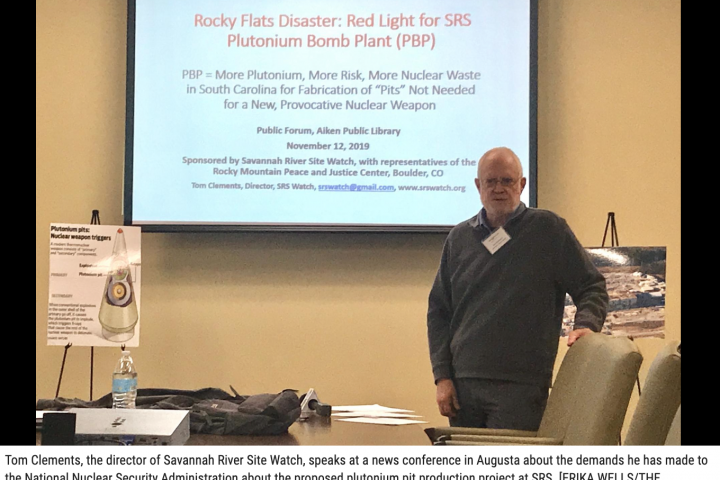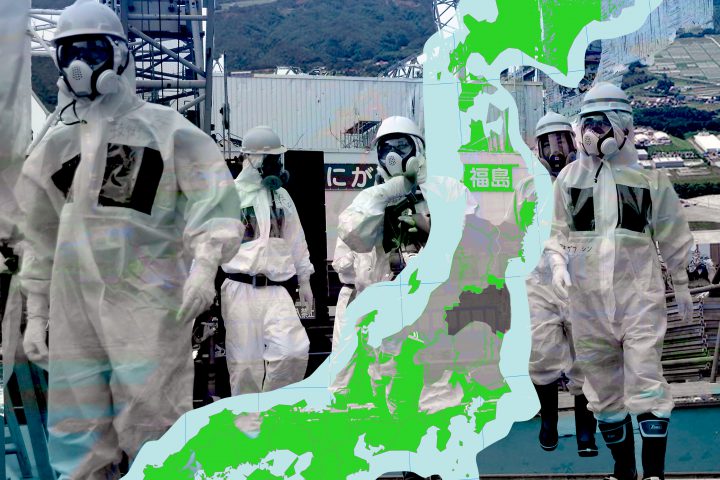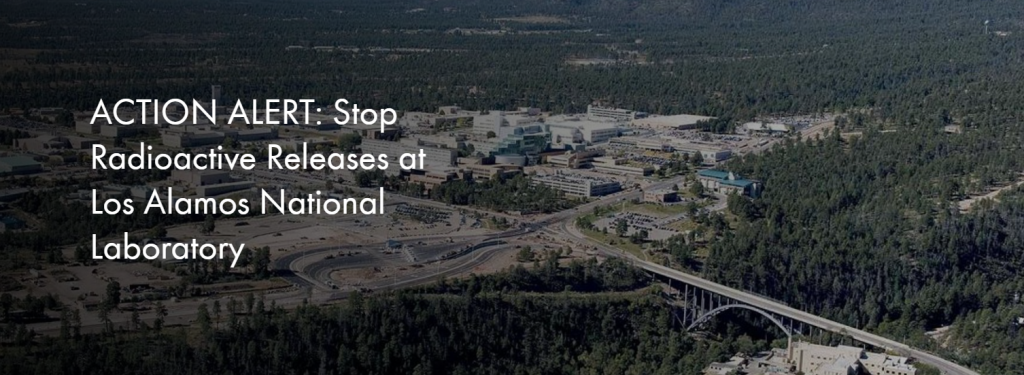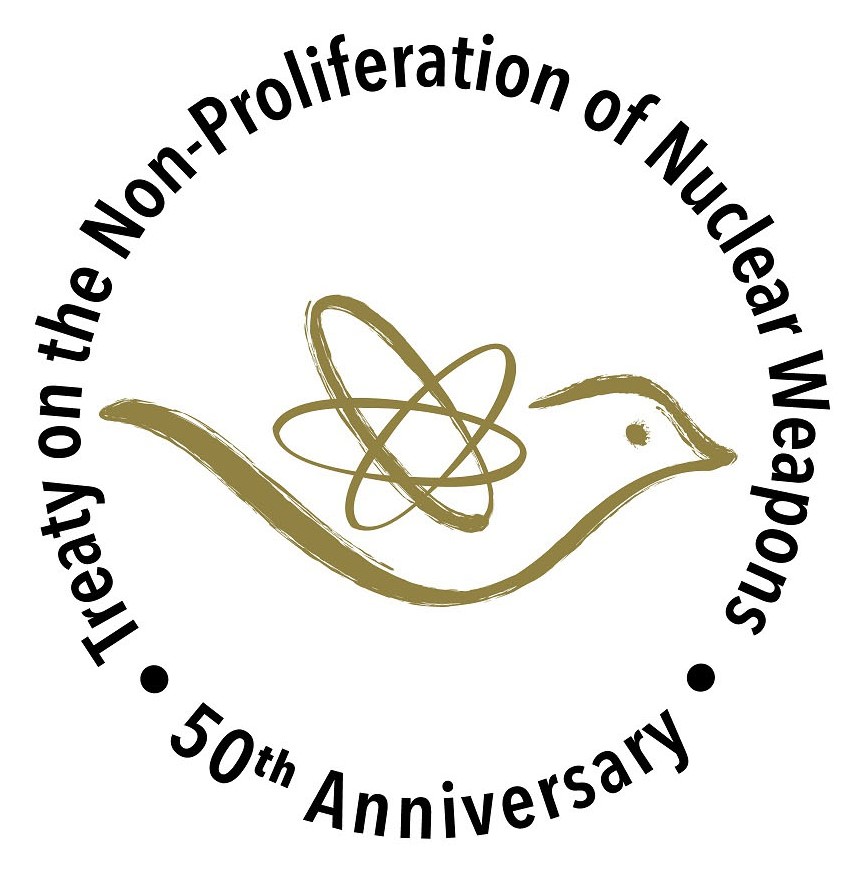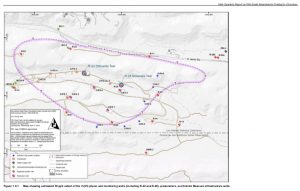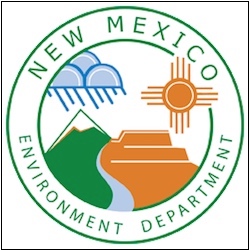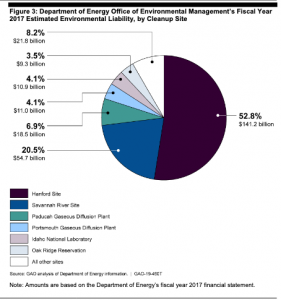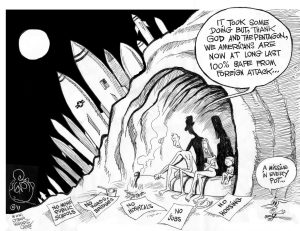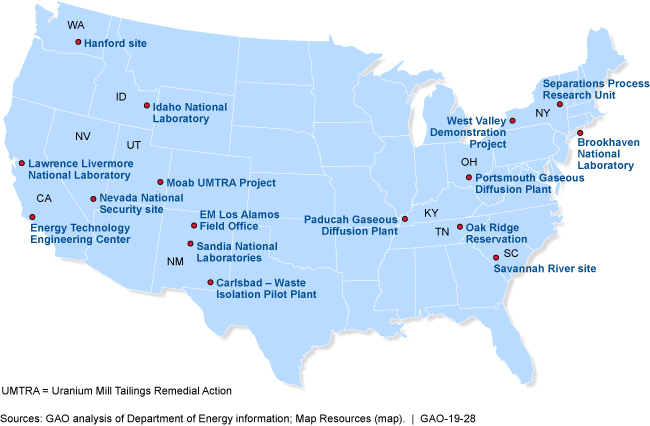FOR IMMEDIATE RELEASE: August 31, 2016
Contact: Denise Duffield, 213-689-9170 <tel:213-689-9170> office
Cindi Gortner 818-489-1226
Bonnie Klea 818-854-4825
Marie Mason 805-279-0356
U.S. Department of Energy Secretly Funding Front Group to Help it Evade Nuclear Cleanup at Santa Susana Field Laboratory
Controversial grant made at the same time department reneged on financial commitment to national independently administered community fund
Community members living near the contaminated Santa Susana Field Laboratory were outraged to learn that the U.S. Department of Energy (DOE) has secretly been funding a front group that is lobbying for the breach of DOE’s cleanup agreement for the Santa Susana Field Laboratory (SSFL) – and that the agency’s request for secrecy may have been made to avoid attention from Senator Barbara Boxer, a longtime supporter of full cleanup.
SSFL is heavily contaminated with nuclear and chemical contamination resulting from decades of nuclear activities and rocket engine testing, In 2010, agreements (Administrative Orders on Consent or AOCs) were signed between the state Department of Toxic Substances Control (DTSC) and DOE and NASA to cleanup all detectable contamination at their respective portions of the property. The AOC was first proposed by former DOE Secretary Dr. Steven Chu and Assistant Secretary for Environmental Management (DOE-EM) Dr. Inez Triay. Boeing, which owns most of the site, refused to sign the agreement and is pushing for a much weaker cleanup.
In 2011, under the Brown Administration, the DTSC’s commitment to full cleanup began to erode, and along with it, those of NASA and DOE. Over objections from community members and elected officials , the DTSC replaced the longstanding public participation vehicle, the SSFL Work Group, with the SSFL Community Advisory Group (SSFL CAG). The CAG’s leadership is composed of individuals with ties to the parties responsible for the contamination at SSFL, and the group actively lobbies against the AOCs. One CAG flyer reads, “Why the AOC Cleanup at SSFL is Bad for Our Community” (here .) and states that the AOC will harm the environment and Native American artifacts, which are in fact protected by the AOC. The CAG also denies SSFL’s health impacts. One CAG member, a former SSFL official and current DOE contractor, maligned previous health studies so badly that their authors felt compelled to write an op-ed in the Ventura County Star in defense.
The public has been demanding to know for a long time how the CAG was funded, and neither the CAG nor DTSC have disclosed that information. In December 2015 and in May 2016 , cleanup advocates complained to the DTSC Independent Review Panel (IRP), established by the California legislature to investigate DTSC’s many failings, about the CAG’s anonymous funding and conduct. No action was taken on the matter.
The complaints were instigated by the CAG’s announcement, at it’s August 19, 2015 meeting, that it would be receiving a $32,000 – $35,000 donation from a donor who wished to be anonymous. A video from the meeting shows CAG member Alec Uzemeck claiming the donation had “no strings,” and that it was anonymous “Because everything we do is politically charged. We have people out there who make phone calls. And if you’re the executive of a corporation and you get a call from Barbara Boxer, I’m quite sure that that’s going to have an impact on it. But, we don’t want that. We wanna have the money in hand when we announce who the donors are.” (See video here .) The CAG’s August 2015 minutes (here ) make it clear that the anonymity was at the donor’s request, and so secret that the CAG leadership would not reveal the donor to the full CAG membership, causing one CAG member to resign.
At it’s August 17, 2016 meeting, a full year after having announced its anonymous gift, the CAG revealed that the donor was the Department of Energy. Uzemeck said, “DOE will be coming out with a quarterly report, probably in two or three weeks. And it will have a list of grants on the last page. And DOE is the one that made the grant for us. They are the one who supplied the funding. So, the question’s been answered.” Uzemeck’s statement can be viewed here. The CAG’s tax returns show that the organization received $38,600 in 2015.
The DOE refuses to answer questions about the arrangement, what the grant funds are expended on, explain why the funding was kept secret for a full year, or provide a copy of the grant application and contract. “For one of the Responsible Parties, DOE, to be funding a group that is trying to help DOE avoid its cleanup obligations, and asking for DOE’s identity as the source of the funds to be long kept secret, would be nothing short of scandalous.” said Denise Duffield, Associate Director of Physicians for Social Responsibiiity-Los Angeles in an August 30 email to Dr. Monica Regalbuto, Assistant Secretary for the DOE’s Office of Environmental Management.
Community members are also deeply troubled that DOE funded the CAG during the same month that it broke its commitment and revoked funding for the final year of a five-year commitment to the New Mexico Community Foundation (NMCF)-administered Community Involvement Fund (CIF), which funds independent groups in impacted communities near contaminated DOE sites throughout the country. Reneging on its contract and failing to disperse a final $300,000 payment to NMCF caused over a dozen community groups to lose key funding.
“DOE broke its commitment to provide its funding for community groups near contaminated sites through an independent mechanism and hands-off procedures that assured DOE would not do precisely what it has now done—fund a front group to lobby on DOE’s behalf to get out of its cleanup obligations.” said Duffield in the email to Regalbuto.
Community members are dismayed and angered by the revelations. Simi Valley resident Marie Mason, who has led community cleanup efforts for 28 years, said, “I find it more than shocking that the DOE would fund this group and ask to conceal they are the funding source and especially to not have Senator Boxer find out. I am more than disgusted and filled with sadness. DOE and DTSC are part of the problem with too many close ties to the polluters and total disregard for the communities they are supposed to protect.”
Bonnie Klea, a former worker at SSFL and cancer survivor, said, “I am appalled that DOE funded the CAG so that members can go out and lobby against the AOC and deny the cancer risks from the past, present and future exposure from the site. This is disgusting. ” Klea and others note that the CAG does not represent the views of the community, which overwhelming supports the AOCs. All but 14 of the 3,700 comments submitted on the AOC were in favor of the agreement, and over 1,600 signed a petition last year urging that the cleanup agreements be upheld. (See petition here .)
Duffield’s email to DOE, sent also to local and state officials, implored the agency for answers and noted that no local elected officials had been consulted with or informed of the funding. “The community has the right to know about the intent, character, and tactics of the agency that holds their potential health and well being in its hands. And elected officials, many of whom have been lobbied by the CAG to weaken the cleanup, must be informed about financial contributions that DOE is making to this group to influence them and help it break out the cleanup agreements.”
# # #
The Rocketdyne Cleanup Coalition, or RCC, is a community-based alliance dedicated to the cleanup of the Santa Susana Field Laboratory (SSFL), commonly known as Rocketdyne.
From: Denise Duffield <dduffield(at)psr-la.org>
Date: Mon, Aug 29, 2016 at 12:57 PM
Subject: Time-Sensitive Request re: DOE CAG funding and the SSFL AOC cleanup agreement
To: monica.regalbuto@em.doe.gov
Dear Assistant Energy Secretary for Environmental Management Regalbuto:
I was shocked to learn recently that DOE has been funding a front group that is lobbying for the breach of DOE’s cleanup agreement for the Santa Susana Field Laboratory (SSFL) – and that DOE had apparently requested that the funding be kept secret so that Senator Barbara Boxer wouldn’t learn of it. I write today to both apprise you of this troubling situation and to request further information and documents related to DOE’s decision to fund the SSFL CAG.
The SSFL CAG is a small but highly controversial group that is lobbying against the cleanup agreement (Administrative Order on Consent, or AOC) for SSFL signed by both DOE and the state regulatory agency overseeing the cleanup, the Department of Toxic Substances Control (DTSC). For example, one CAG flyer reads, “Why the AOC Cleanup at SSFL is Bad for Our Community” (here.) “The AOC Cleanup: More Harm Than Good?” reads another (here.) The CAG routinely propagates false information about SSFL’s contamination, health impacts, and cleanup. A CAG – Community Advisory Group – should represent the community. However, the SSFL CAG does not even remotely represent the community, which understands that SSFL is contaminated with dangerous radionuclides and chemicals and needs to be fully remediated per the current DOE cleanup agreement. The CAG is a classic “astroturf” (i.e., fake grassroots) group dominated by people with ties to the parties responsible for the contamination at SSFL.
The public has been demanding to know for a long time how the CAG was funded and how it spends those funds. The CAG has refused to disclose that information, which is troubling for an entity that claims to be public. The community has suspected that the money comes from one or more of the entities that polluted the site and that is trying to get out of its cleanup obligations, and that that is why the CAG wouldn’t disclose the funding source or sources. Now it appears that that is indeed the case. For one of the Responsible Parties, DOE, to be funding a group that is trying to help DOE avoid its cleanup obligations, and asking for DOE’s identity as the source of the funds to be long kept secret, would be nothing short of scandalous.
The DOE SSFL cleanup agreement (AOC) was proposed by former DOE Secretary Dr. Steven Chu and Assistant Secretary for Environmental Management (DOE-EM), Dr. Inez Triay. It was signed by DOE and DTSC in December 2010. The AOC stipulates that Area IV and the Northern Buffer Zone at SSFL are to be cleaned up to background. In February 2014, at a meeting of the SSFL Work Group, DOE SSFL Project Director John Jones told the audience of community members, elected officials, and media that the DOE was committed to upholding the AOC agreement (see video here.)
Since then, the community has seen an erosion of DOE’s stated commitment, including a Public Scoping plan which included numerous options that would violate the AOC (such as keeping waste on site), accompanied by a report grossly exaggerating soil removal estimates (see statement by the Southern California Federation of Scientists here.) In addition, the AOC explicitly defines soils as including structures (see page five of AOC here), which are to be cleaned up to background and all wastes to go to licensed low level radioactive waste disposal sites, yet DOE is now taking the position that it can demolish nuclear structures at SSFL at will, using far less protective standards, and dispose of their radioactive wastes anywhere. The DOE has also apparently told the CAG that it is contemplating trying to modify the AOC to be required to perform much less cleanup than it had promised in order to save money (see CAG July 20, 2016 minutes here.)
And now, we have learned that the DOE has been funding the CAG. The DOE is abundantly aware that the CAG openly, actively, and vigorously works to break the AOC cleanup agreement that DOE signed. DOE’s funding of the SSFL CAG is therefore an alarming and direct assault on the AOC itself. It also makes clear that the CAG is an agent of one of the parties responsible for the pollution at the site and which is trying desperately to get out of its obligation to clean up all the radioactive and toxic mess that it made. The CAG regularly lobbies elected officials to try to persuade them to push to weaken the cleanup —an activity outside the scope of a regular community advisory group. It is very troubling for DOE, responsible for the contamination and sworn to uphold a cleanup agreement to clean it all up, to be secretly funding a group that lobbies elected officials to support DOE breaking its agreement.
We are also deeply disturbed by the secrecy surrounding DOE’s grant to the SSFL CAG. The CAG first announced that it was to receive $32,000 in funding at an August 2015 meeting, in which it stated that the donor wished to remain anonymous in order to avoid Senator Barbara Boxer, a longtime SSFL cleanup supporter, learning of the funding and taking action thereon. (See video of CAG meeting here.) Only now, a year later, near the end of Senator Boxer’s esteemed Senate career, has the CAG apparently been given permission to reveal that the identity of its funder is the DOE. It is outrageous and unconscionable for a government agency to make a financial contribution to any organization and request that the funding be kept secret, for any reason, let alone for the purpose of evading the attention of a United States Senator who would likely object to what it was doing. The CAG’s August 2015 minutes (here) make it clear that the anonymity, which lasted a full year, was at the donor’s request.
Further, the DOE funded the CAG during the same year that it broke its commitment and revoked funding for the final year of a five-year commitment to the New Mexico Community Foundation (NMCF)-administered Community Involvement Fund (CIF), which funds independent groups in impacted communities near contaminated DOE sites throughout the country. The DOE’s agreement with NMCF states, “By utilizing a cooperative agreement with an independent entity to distribute grant funds to qualified organizations representing the interests of the public, DOE-EM will ensure that the program is not viewed as a surrogate for DOE’s own preferences, and that long-term DOE-EM decisions are based on input from individuals and/or groups who are most likely to be affected by those decisions.”
In other words, DOE was supposed to stay out of the grant selection process to assure that groups funded were independent of DOE. However, the DOE weighed in heavily against a re-application submitted by Physicians for Social Responsibility-Los Angeles (PSR-LA) for the SSFL Work Group, the longstanding advisory group established a quarter of a century ago by the electeds and which represents the main mechanism for the community to learn about and provide feedback on the cleanup and hold the agencies accountable. In August 2013 we applied for and received a $23,000 CIF grant. We re-applied in August 2014, but learned that DOE was pressuring CIF to deny the grant, which violated its commitment to keep hands-off the selection process. To its credit, in November 2014, the NMCF awarded the second grant of $20,000 (and did not fund the SSFL CAG, which had also applied for the funding.)
Very shortly thereafter, the DOE reneged on the final $300,000 it had pledged to NMCF, impacting not just PSR-LA and the SSFL Work Group but over a dozen communities nationwide. NMCF sent a message to its grantees on March 16, 2015 stating, “Earlier this year, representatives of the Department of Energy (DOE) advised New Mexico Community Foundation (NMCF) that the foundation would receive only partial funding for the CIF grant program in 2015. Last month, we were informed that NMCF would only be funded a small portion of the overall budget request solely for administrative oversight of the current 2014-15 grant cycle, and no funding would be allocated to go towards new grant-making. Adding to our confusion and concern, the decision-making process associated with the 2015 CIF appropriation has not been clearly communicated, nor have we been given a clear indication of the reasons for the reduction in funding.”
We cannot say with certainty that DOE revoked funding to the NMCF due to its decision to fund the SSFL Work Group despite the inappropriate pressure by DOE. But, we must point this out as a strong possibility in light of the timing and DOE actions described herein. The CIF grant enabled the return of the trusted public participation vehicle, the SSFL Work Group, which attracted capacity crowds who were able to learn about the contamination that would be left on site if the cleanup agreements were not upheld. DOE had participated in the SSFL Work Group since its inception, but has now stopped attending virtually any public meeting where it could be held to account for its actions. Regardless of DOE’s motivation to abrogate its agreement with NMCF, it is very troubling that the DOE made this decision while simultaneously funding an organization that opposes a cleanup agreement that the DOE has been strongly signaling it wants to break. DOE broke its commitment to provide its funding for community groups near contaminated sites through an independent mechanism and hands-off procedures that assured DOE would not do precisely what it has now done—fund a front group to lobby on DOE’s behalf to get out of its cleanup obligations.
It is difficult to overstate just what is at stake for communities near SSFL right now. Decades of nuclear and aerospace activities at SSFL have left a legacy of dangerous nuclear and chemical contamination that continues to migrate from the site to offsite populations. Federal studies have shown an increase in cancers associated with proximity to the site. In 2010, after decades of attempts to achieve full cleanup, the historic AOCs were signed. As a result, $41.5 million dollars were spent for a US EPA survey that identified background radiation and found nearly 500 samples, in just one area of SSFL, that were above background, in some cases dramatically so. The community eagerly anticipated full cleanup, which the AOC stipulated would be complete by 2017.
We are now just months away from 2017, but cleanup has yet to begin. Indeed, DOE’s draft EIS – which a court ordered a decade ago and was due to be published years ago – is not yet released. Community members have feared that DOE’s EIS would be a full-bodied attack on the very cleanup agreement DOE had sworn to carry out, and wondered if the EIS was being delayed so as to not come out until after Senator Boxer leaves office and can no longer take action to insist DOE live up to the promises made. This suspicion has only increased given the timing of the announcement that DOE is the CAG’s secret benefactor, and that the reason for the secrecy was to avoid attention from Boxer. The community is appalled and angry, and deserves to know the full details of DOE’s arrangement with the SSFL CAG.
Below please find background information and documentation on these matters, followed by a series of pressing questions. I request that DOE provide answers to the questions, as well as a copy of the SSFL CAG Foundation’s grant application/proposal to the DOE and its DOE grant/contract, as well as any grant report, immediately. If there has been more than one grant to the CAG, provide information about each. The community has the right to know about the intent, character, and tactics of the agency that holds their potential health and well being in its hands. And elected officials, many of whom have been lobbied by the CAG to weaken the cleanup, must be informed about financial contributions that DOE is making to this group to influence them and help it break out the cleanup agreements. DOE funding a front group to lobby elected officials to push them to support DOE breaking its cleanup agreements would be an outrage.
Background and Documentation
The SSFL CAG was formed in 2012 over the objections of longtime community members and local elected officials. (See community petition here and letter from elected officials Julia Brownley, Fran Pavley, Shelia Kuehl, Linda Parks, and Greig Smith opposing formation of the CAG and supporting instead the longstanding SSFL Work Group here.) The CAG is widely perceived as a front group for the polluters that does not represent the interests of the community, because it is opposes the cleanup agreements that are overwhelming supported by the community. All but a handful of the 3,700 comments submitted on the AOC were in favor of the agreement. Last year over 1,600 signed a petition urging that the cleanup agreements be upheld. (See petition here.) Yet every member of the CAG opposes the AOCs, despite the requirements that a CAG represent the range of community perspectives.
The CAG’s leadership is composed of individuals who are former employees or contractors of the parties responsible for cleaning up the site (Boeing, DOE, and NASA.). Alec Uzemeck worked for Boeing’s predecessor, North American Aviation, at its then-headquarters in Downey for which the Santa Susana site was the field lab. Brian Sujata was Boeing’s project manager for SSFL cleanup, while Boeing was DOE’s contractor for the cleanup. Ross Berman worked for both Tetra Tech and CH2M Hill, contractors for the responsible parties. And Abe Weizberg was an official at SSFL, in charge of safety for the SNAP reactors, one of which experienced 80% fuel damage in an accident. Weitzberg remains a consultant for the DOE.
Since its founding, the SSFL CAG has undertaken a multi-faceted campaign aimed at undoing the SSFL cleanup agreements. This includes exaggerating cleanup soil volumes and truck traffic and claiming that the cleanup will harm the site’s natural environment and Native American artifacts (which are in fact protected by the AOC.) The CAG also attempts to minimize the contamination at SSFL and health impacts. Last year, CAG member and former SSFL official Weitzberg launched an effort to have the Agency for Toxic Substances and Disease Registry (ATSDR) refute prior health studies and weigh in against the cleanup. In the process, he maligned the authors of those studies, who expressed their objections in an article published in the Ventura County Star here. The CAG has also made a habit of regularly and publicly disparaging longtime community members and cleanup advocates. Whereas meetings of the longstanding SSFL Work Group are packed with concerned members of the public and representatives of elected officials, very few attend CAG meetings. The last meeting had only half a dozen CAG members and a roughly equal number of the public, most of whom were critics of the CAG’s biases and actions.
On August 19, 2015, CAG member Alec Uzemeck announced at an SSFL CAG meeting that the CAG would be receiving a $32,000 – $35,000 donation from a donor who wished to be anonymous. The minutes from the meeting (which can be viewed here) state that the CAG established a non-profit foundation, “…in response to the gift from a donor who wishes to remain anonymous.” The CAG leadership was so secretive about the donor’s identify that it refused to inform the full CAG membership, causing one CAG member to resign, as reflected in the minutes, ” As a result of the fact that the donor is anonymous, Elizabeth Harris has resigned from the CAG…” At the meeting, Uzemeck repeatedly said that the donation had “no strings,” and of the gift said, “Why is it anonymous at this point? Because everything we do is politically charged. We have people out there who make phone calls. And if you’re the executive of a corporation and you get a call from Barbara Boxer, I’m quite sure that that’s going to have an impact on it. But, we don’t want that.” (See video here.)
In December 2015 and in May 2016, cleanup advocates and community members complained to the DTSC Independent Review Panel (IRP), established by the California legislature to investigate DTSC’s many failings, about the CAG’s anonymous funding and conduct (see paragraphs 4 -6 on page 2 of the IRP’s May 12, 2016 minutes here.)
Finally, at an SSFL CAG meeting on August 17, 2016, nearly a year after announcing the funding and the donor’s request that its identity be kept secret so as to keep Senator Boxer in the dark, Uzemeck announced, “DOE will be coming out with a quarterly report, probably in two or three weeks. And it will have a list of grants on the last page. And DOE is the one that made the grant for us. They are the one who supplied the funding. So, the question’s been answered.” A recording of Uzemeck’s statement can be viewed here.
The SSFL CAG’s tax returns, which can be viewed here, show that the organization received $38,600 in 2015.
Questions for the Department of Energy
1. Did DOE, as reflected in the CAG’s minutes, suggest to the SSFL CAG to form a non-profit foundation so that it could provide funding to the CAG?
2. When did DOE begin discussing funding the CAG? When did it actually make the contribution, and what was the amount of the gift? Has there been more than one?
3. What is the stated purpose of the grant? What will/have grant funds be expended on?
4. Under what category of funding was this grant made? Was it made from the DOE Office of Environmental Management, the same office that reneged on its commitment to NMCF?
5. CAG member Alec Uzemeck repeatedly stated that the grant had “no strings.” Does the DOE grant have any restrictions? Is lobbying prohibited? Is the CAG required to submit a report on its activities? Will it be invited to reapply for funding again this year?
6. Why did DOE request that its gift to the CAG be anonymous? Did the DOE tell the CAG, as expressed by Alec Uzemeck, verbally or in writing, that it wanted its gift secret, at least for a time, because it wanted to avoid repercussions from Senator Barbara Boxer?
7. How does the DOE reconcile public statements that it will uphold the AOC at the same time that it is funding a group that overtly works to destroy the AOC?
8. Did DOE’s animosity toward the Santa Susana cleanup agreement, and its displeasure at CIF funding PSR-LA and the SSFL Work Group, cause it to cancel the last year of its funding to NMCF, and thus cost over a dozen community groups throughout the United States to lose funding?
9. Did DOE consult with elected officials historically concerned about SSFL cleanup as to whether the grant should be given to the CAG and whether it was a legitimate group representing the community? Why did DOE ignore the opposition to the CAG expressed, in writing, by the electeds?
10. Why did DOE not publicly solicit grant applications instead of secretly arranging to give the money to the CAG? Why did DOE not solicit a grant application from the longstanding SSFL Work Group established by the electeds, which supports the cleanup agreements DOE is supposedly sworn to uphold? Given that very few people attend CAG meetings, and the Work Group meetings are often standing-room only, why did DOE secretly fund the CAG, without a competitive grant application process, and not solicit an application from SSFL the Work Group?
Again, in addition, I request that DOE provide a copy of the SSFL CAG Foundation’s grant application or proposal to DOE, as well as the DOE-SSFL CAG grant contract or agreement, immediately.
Sincerely,
Denise Duffield
Coordinator, SSFL Work Group
and
Associate Director, Physicians for Social Responsibility-Los Angeles
cc: Senator Barbara Boxer
Congresswoman Julia Brownley
California Senator Fran Pavley
LA County Supervisor Sheila Kuehl
Ventura County Supervisor Linda Parks
LA City Councilmember Mitch Englander
DTSC Director Barbara Lee
DTSC IRP Chair Gideon Kracov

